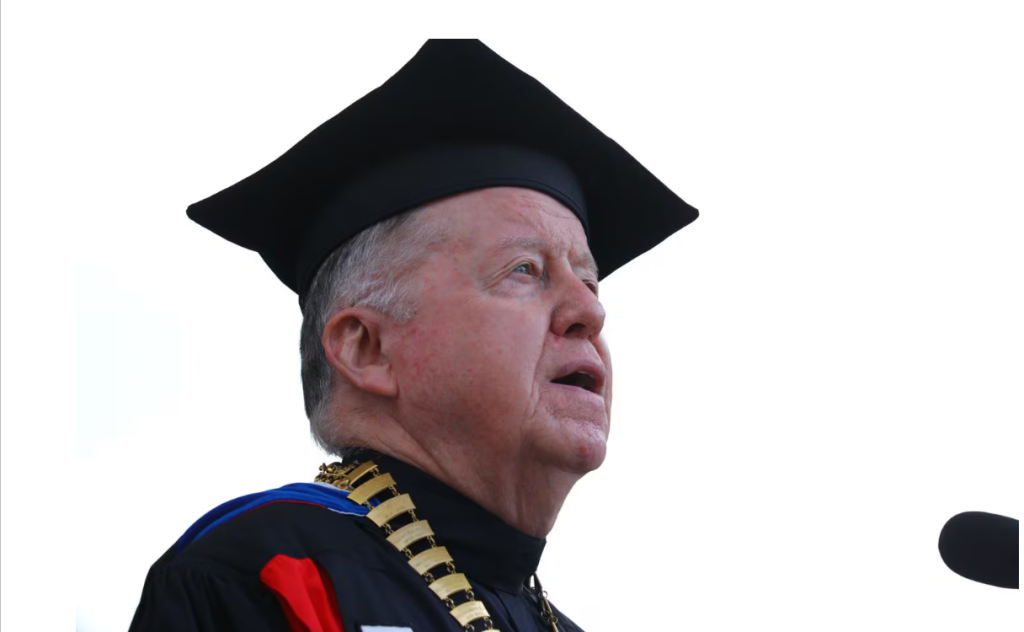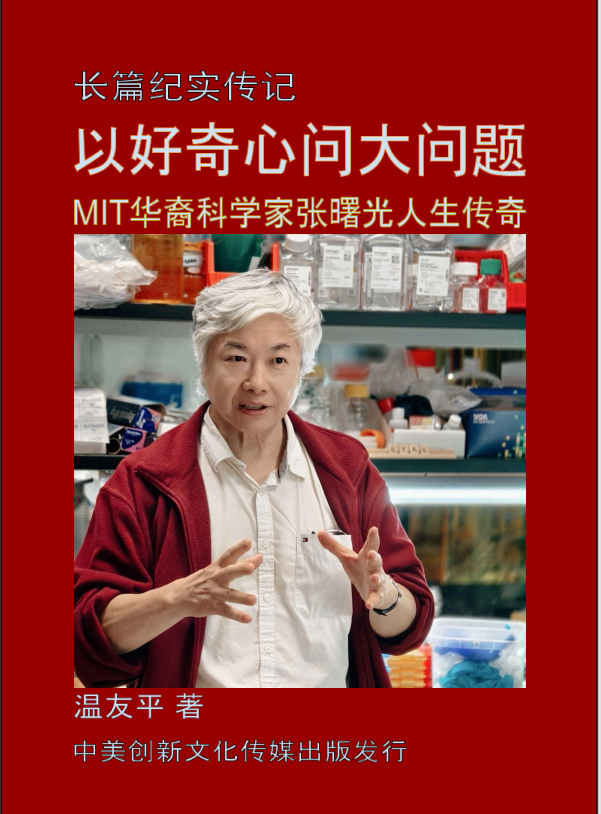【中美创新时报2024 年 6 月 7 日编译讯】(记者温友平编译)波士顿学院周五宣布,威廉·P·莱希牧师(Rev. William P. Leahy)是波士顿学院历史上任职时间最长的校长,将于 2026 年夏天卸任,并于秋季开始寻找他的继任者。《波士顿环球报》记者Tonya Alanez 和 Katherine McCabe对此作了下述报道。
学院在一份声明中表示,现年 77 岁的莱希在周五的一次理事会会议上宣布了卸任消息。
“我即将结束担任波士顿学院校长的第 28 年,我一直在认真考虑大学的未来,尤其是向新校长的过渡,”莱希在声明中说道。 “在接下来的两年里,我打算一如既往地继续致力于推动波士顿学院的发展,特别是通过我们的筹款活动‘飞向更高’。”
波士顿学院董事会主席约翰·菲什(John Fish)表示,董事会成员“全力支持”莱希的决定。
“在他的领导下,波士顿学院打算保持其机构稳定性、连续性和发展势头,”波士顿萨福克建筑公司董事长菲什说道。
莱希在中西部长大,后来前往加利福尼亚,在那里获得了声望颇高的学位。他的教学生涯将他带到了密尔沃基的另一所耶稣会学校马凯特大学,在那里他升任执行副校长,这是他去波士顿之前的最后一站。
波士顿学院由耶稣会于 1863 年创立,是新英格兰最大的天主教大学。
1996 年,莱希被任命为波士顿学院第 25 任校长,接替了牧师 J. 唐纳德·莫南 (J. Donald Monan)。莫南被广泛认为是将波士顿学院从一所苦苦挣扎的通勤学校转变为以哲学和神学系闻名的精英天主教大学的领导者。
莱希很快为波士顿学院制定了雄心勃勃的发展计划。一项耗资 10 亿美元的扩建计划彻底改变了横跨波士顿和牛顿栗山地区的校园。主校区的教学楼、宿舍和体育设施都进行了翻新或更换。
21 世纪初,由于波士顿罗马天主教大主教区在神职人员性虐待危机中面临数百万美元的诉讼,波士顿学院购买了位于主校区对面联邦大道的大主教区的建筑和土地。
该地产现在是该大学的艺术博物馆、神学院以及波士顿学院棒球和垒球队的体育设施所在地。波士顿学院还针对性虐待危机展开了学术应对,成立了“21 世纪教会中心”,研究全球天主教会面临的挑战和问题。
此后近三十年,学院的捐赠基金增加了一倍多,达到 35 亿美元,校园面积扩大了 150 英亩,本科生申请人数超过 30,000 人。
“我们现在吸引了来自全国乃至全球最优秀、最聪明的人才,”校友会主席温德尔·毕晓普 (Wynndell Bishop) 说道,他于 2021 年 10 月从多切斯特搬到了马里兰州切弗利。
45 岁的毕晓普在莱希担任校长的同一年以新生身份来到这里,自那以后,学院一直“持续快速增长”,毕晓普在周五晚上的电话采访中说道。
5 月份,《福布斯》杂志将波士顿学院列入“新常春藤盟校”名单,该校由公立和私立院校组成。
“多亏了莱希神父,波士顿学院现在被认为是新的常春藤盟校,”弗吉尼亚州亚历山大市首席采购官毕晓普说。“我们非常感谢莱希神父所做的一切。正是他的远见卓识以及他为实现这一愿景所做的努力,才使得波士顿学院取得了如此巨大的成功。”
毕晓普那个时代的毕业生之间流传着一个笑话:“我们中的大多数人现在可能都进不了波士顿学院了,”毕晓普说。“这是因为现在被波士顿学院吸引的学生的才华和学术实力。”
莱希离开前的两年准备时间“在高等教育中越来越常见,这将使董事会有充足的时间来确定和面试合格的候选人,”学院发言人杰克·邓恩说。
“目标是让董事会在 2025 年 3 月的会议上任命继任者,让当选校长有时间完成学年并休假,然后再与莱希神父共度时光,了解该职位的复杂性,”邓恩说。
委员会将寻找一位顶级耶稣会神父来接替莱希,菲什说。
“为了履行我们作为受托人的职责,执行委员会认为我们需要尽一切努力来确定、招募和任命一位合格的耶稣会士作为波士顿学院的下一任校长,他将推进大学独特的使命和传统,”菲什说。
他说,搜寻过程将在 9 月的下一次董事会会议上开始。
之后,执行委员会将与重要的组成团体进行磋商,从受托人助理、教职员工、学生和校友到耶稣会组织/社团,学院的声明说。
菲什说,候选人很可能会在 2025 年初确定和面试,委员会的建议将在 2025 年 3 月提交给董事会批准。
“莱希神父的校长任期对波士顿学院产生了重大影响,”菲什说。“我们期待他在未来两年继续发挥领导作用,因为我们开始寻找他的继任者。”
莱希出生于奥马哈,在爱荷华州伊莫金长大。他首先进入圣路易斯大学学习,并于 1972 年和 1975 年获得哲学学士学位和美国历史硕士学位。
从那里,莱希前往加利福尼亚州。在伯克利耶稣会神学院,他获得了神学和历史神学学位。他于 1978 年成为神父。
莱希接下来去了斯坦福大学,在那里攻读美国历史博士学位,然后回到中西部,在威斯康星州的高中任教两年。
他于 1985 年加入马凯特大学,担任历史讲师。1991 年,他成为终身副教授,并升任执行副校长。
题图:校长威廉·P·莱希于 2021 年在波士顿学院毕业典礼上合影,宣布将于 2026 年夏天卸任。PAT GREENHOUSE/GLOBE STAFF
附原英文报道:
Boston College president Rev. William P. Leahy to step down in 2026
By Tonya Alanez and Katherine McCabe Globe Staff and Globe staff,Updated June 7, 2024
The Rev. William P. Leahy, the longest-serving president in the history of Boston College, will step down in the summer of 2026, the university announced Friday, and the search for his successor will begin in the fall.
Leahy, 77, announced his departure during a trustees meeting on Friday, the college said in a statement.
“I am finishing my 28th year as president of Boston College, and I have been thinking a great deal about the University’s future, particularly the transition to a new president,” Leahy said in the statement. “For the next two years, I intend to keep working as always on advancing BC, especially through our fundraising campaign, Soaring Higher.”
John Fish, chairman of the college’s board of trustees, said board members “fully support” Leahy’s decision.
“The University intends to maintain its institutional stability, continuity, and momentum experienced under his leadership,” said Fish, the chairman of Suffolk Construction in Boston.
Leahy grew up in the Midwest and traveled to California where he earned prestigious degrees. His teaching career took him to Marquette University, another Jesuit school in Milwaukee, where he rose to executive vice president, his last stop before Boston.
Founded in 1863 by the Society of Jesus, Boston College is the largest Catholic university in New England.
Leahy was appointed BC’s 25th president in 1996, succeeding the Rev. J. Donald Monan, the leader widely credited with transforming BC from a struggling commuter school to an elite Catholic university renowned for its philosophy and theology departments.
Leahy quickly embarked on an ambitious growth plan for BC. A $1 billion expansion plan dramatically changed its campus that straddles both Boston and the Chestnut Hill area of Newton. Academic buildings, dormitories, and athletic facilities were renovated or replaced on the main campus.
In the early 2000s, as the Roman Catholic Archdiocese of Boston faced millions of dollars in lawsuits amid the clergy sex abuse crisis, BC purchased the archdiocese’s buildings and land located across Commonwealth Avenue from the main campus.
The property now houses the university’s art museum, school of theology, and athletic facilities for BC baseball and softball teams. BC also launched an academic response to the sex abuse crisis, launching the Church in the 21st Century Center, which examines the challenges and issues facing the global Catholic church.
In the nearly three decades since then, the college’s endowment has more than doubled to $3.5 billion, the campus expanded by 150 acres, and undergraduate applications surpassed 30,000.
“We now attract the best and the brightest from across the country and around the globe,” said alumni president Wynndell Bishop, who relocated from Dorchester to Cheverly, Md., in October 2021.
Bishop arrived as a freshman the same year Leahy became president and it’s been nothing but “sustained and meteoric growth since,” Bishop, 45, said in a phone interview Friday evening.
Forbes magazine in May listed Boston College on its list of “New Ivies,” a mix of public and private institutions.
“Due to Father Leahy, BC is now considered the new Ivy,” said Bishop, who works as chief procurement officer for the city of Alexandria, Va. “We owe a great debt of gratitude to Father for all that he has done. It has been his vision, and his work implementing that vision, that has made BC such a resounding success.”
The running joke among Bishop’s era of graduates is “the majority of us probably wouldn’t be able to get into BC now,” Bishop said. “And that’s because of the talent and the academic prowess of the students who are attracted to BC at this point.”
The two-year lead time before Leahy leaves “is increasingly common in higher education, and will allow the board of trustees ample time to identify and interview qualified candidates,” said Jack Dunn, a college spokesperson.
“The goal is to have the board appoint a successor at its March 2025 meeting and for the president-elect to have time to finish the academic year and take a sabbatical before spending time with Fr. Leahy to learn the complexities of the position,” Dunn said.
The committee will be looking for a top Jesuit priest to replace Leahy, Fish said.
“To fulfill our responsibilities as trustees, the Executive Committee believes that we need to do all we can to identify, recruit, and name a qualified Jesuit as BC’s next president, one who will advance the University’s distinctive mission and heritage,” Fish said.
The search process will begin at the trustees’ next board meeting in September, he said.
After that, the executive committee will consult with important constituent groups, from trustee associates, faculty, staff, students, and alumni, to Jesuit organizations/societies, the college’s statement said.
Candidates will likely be identified and interviewed in early 2025 with committee recommendations submitted to the board for its approval in March 2025, Fish said.
“Fr. Leahy’s presidency has been transformational for Boston College,” Fish said. “We look forward to his continued leadership during the next two years as we embark on the search for his successor.”
Leahy was born in Omaha and raised in Imogene, Iowa. His studies first took him to Saint Louis University, where he earned a bachelor’s degree in philosophy and a master’s in US history, in 1972 and 1975.
From there, Leahy headed to California. At the Jesuit School of Theology at Berkeley he earned degrees in theology and historical theology. He entered the priesthood in 1978.
Leahy next went to Stanford University, where he pursued a doctoral degree in US history and then returned to the Midwest and taught high school in Wisconsin for two years.
He joined the faculty at Marquette in 1985 as an instructor of history. In 1991, he became an associate professor with tenure and rose to executive vice president.

